Welcome to Guangzhou, a vibrant city in southern China known for its rich history, cultural heritage, and modern attractions. As you explore this dynamic metropolis, you’ll find a treasure trove of experiences waiting for you. In this blog, we’ll take you on a virtual tour of some of Guangzhou’s most captivating destinations, each offering a unique glimpse into the city’s past and present. From historic temples to modern amusement parks, there’s something for everyone in Guangzhou.
Canton Tower (From ¥148)
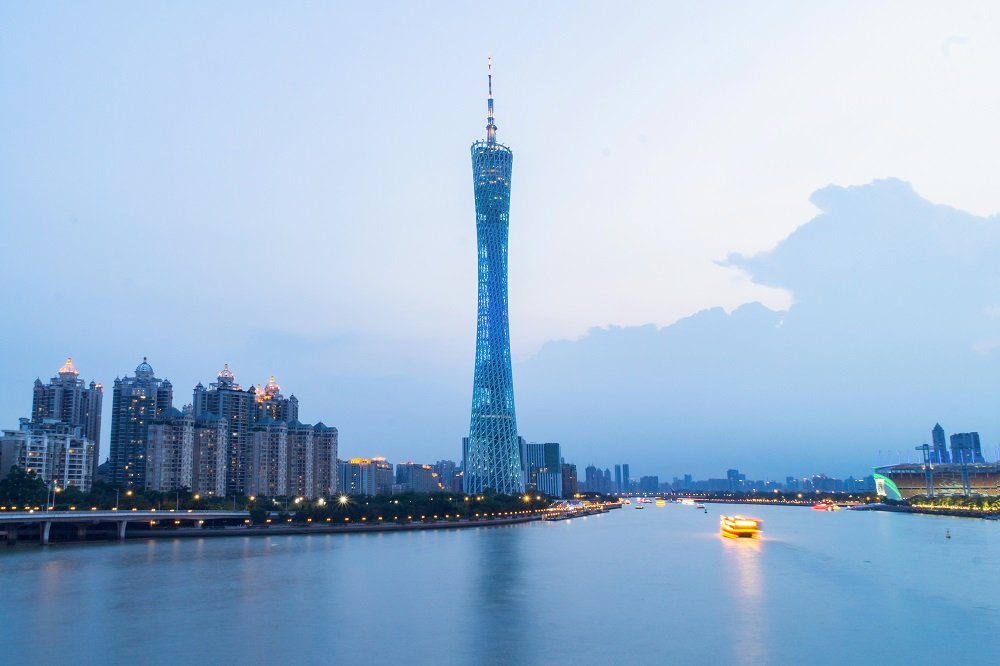
The Canton Tower is a landmark in Guangzhou, soaring to a height of 600 meters, including its antenna. It’s one of China’s renowned skyscrapers, offering panoramic views of the city. With its elegant design often referred to as the “Slim Waist,” the tower lights up beautifully at night, making it an excellent spot for capturing the city’s skyline.
For a spectacular experience, arrive at the tower around 3:30 PM to catch the sunset from its observation deck between 4:30 PM and 5:00 PM. This way, you can witness Guangzhou’s transition from day to evening, making it a preferred choice for many visitors.
Shamian Island (Free)

Throughout history, Shamian Island has been a crucial trading port in Guangzhou. During the Song, Yuan, Ming, and Qing dynasties, it served as a vital link between China and overseas trade. After the Opium Wars, it became a concession shared by the British and French, embodying a piece of modern Chinese history and the old concessions.
Shamian Island draws visitors not only with its Western-style architecture but also its scenic surroundings, attracting locals for recreational activities. The island boasts sports clubs and professional tennis courts. Many locals, particularly the elderly, enjoy practicing Tai Chi or even fishing along the banks of the Pearl River here.
Haixinsha Island (Free)
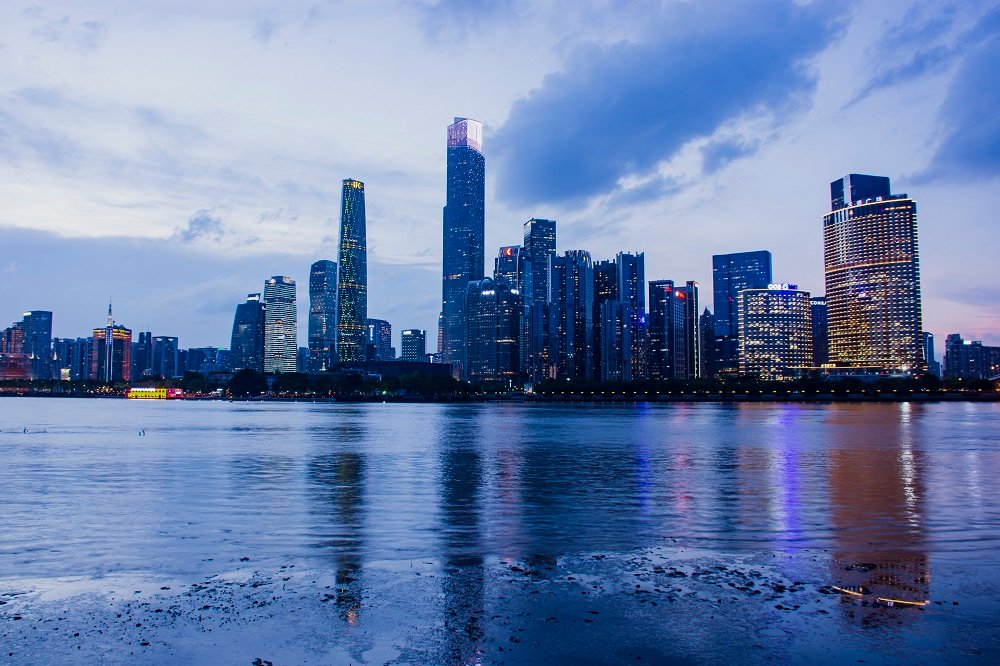
Haixinsha Island is an artificial island located on the Pearl River, covering an area of 55,000 square meters. With its proximity to Flower City Square, it offers stunning views of the Guangzhou Tower across the river. Because of this, it’s a popular spot for many to admire the tower from afar, especially favored by photography enthusiasts.
Additionally, it hosts the annual International Lighting Festival, providing a dazzling view of the Pearl River and making it an excellent destination for a nighttime tour of Guangzhou.
Sacred Heart Cathedral (Free)
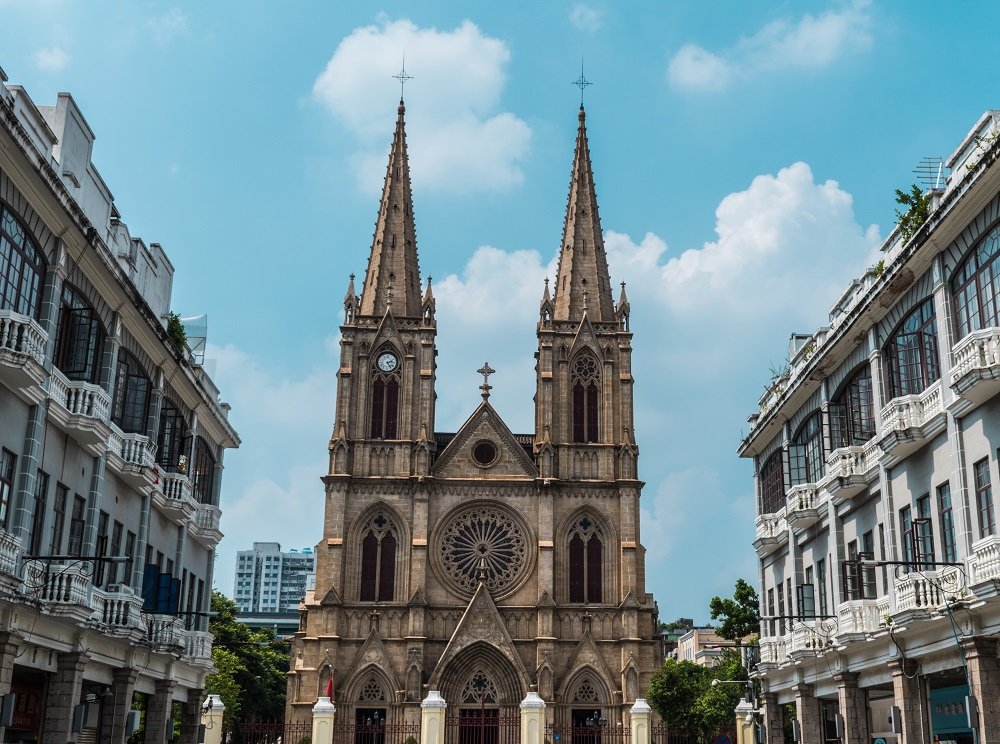
The Sacred Heart Cathedral stands as one of the most magnificent surviving twin-spired Gothic-style buildings in China. It’s the largest stone-structured Catholic church in Southeast Asia and one of the four stone-structured Gothic cathedrals in the world, rivaling the famous Notre-Dame Cathedral in Paris.
This cathedral has a rich history; originally built as the residence of the Viceroy of the Two Guangs in the late Qing Dynasty, it was transformed into a church by the invading British forces in 1863. With its towering spires reaching a height of 58.5 meters, it boasts an imposing presence, constructed entirely from granite. It incorporates nearly all the elements of a Gothic cathedral, featuring early-style stained glass windows and later-style twin bell towers. The cathedral’s facade is graced by a pair of soaring twin stone spires, each housing four large bronze bells imported from France.
Pearl River Night Cruise (From ¥46)
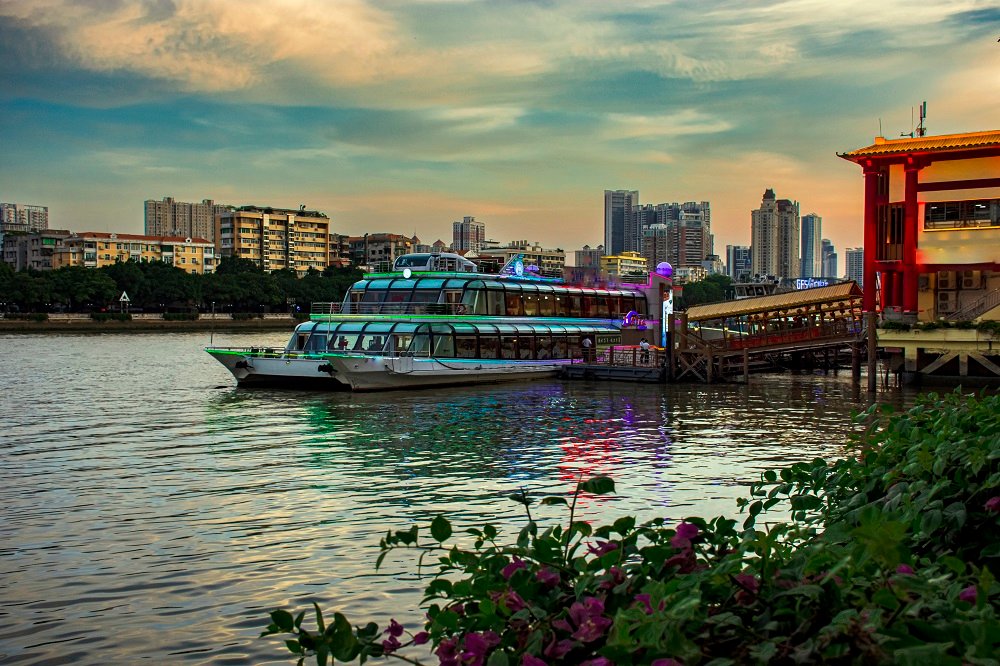
The Pearl River night cruise in Guangzhou is a dreamy experience, an essential must-do attraction for visitors. From White Swan Lake to the Canton Tower, from Haizhu Bridge to Liede Bridge, and from Shamian Island to Haixinsha Island, the cruise offers a panoramic view of many iconic landmarks.
Guangzhou boasts 8 different piers for night cruises, stretching from west to east: Xidi Pier, Provincial Government Pier, Tianzi Pier, Dashatou Pier, Canton Tower Zhongda Pier, Canton Tower Wealth Pier, Haixinsha West Pier, and Haixinsha East Pier. Each pier provides unique sights, so you can choose the one that aligns with your travel itinerary.
Butterfield & Swire's Godowns & Wharf (Free)
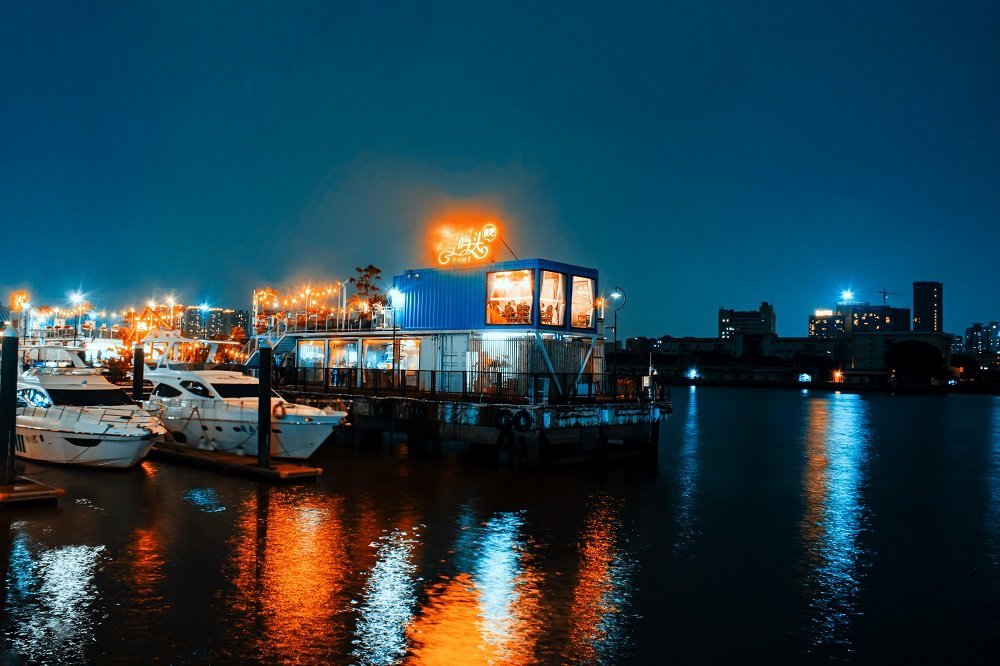
Butterfield & Swire’s Godowns & Wharf, originally built by the British firm Jardine Matheson between 1904 and 1908, comprises three T-shaped concrete piers and seven brick-and-wood warehouses. The entire dock area covers approximately 71,000 square meters, with a land area of around 54,000 square meters and a waterfront length of 312 meters.
While preserving the integrity, authenticity, and historical significance of the original dock area, Butterfield & Swire’s Godowns & Wharf has introduced various businesses, including an international wine procurement center, exhibition halls, creative design studios, cinemas, restaurants, yacht clubs, and distinctive bars. The goal is to transform Butterfield & Swire’s Godowns & Wharf into a multifunctional “urban living room” in Guangzhou, integrating cultural creativity, trade exhibitions, sightseeing, leisure, and entertainment.
Baiyun Mountain (¥5)
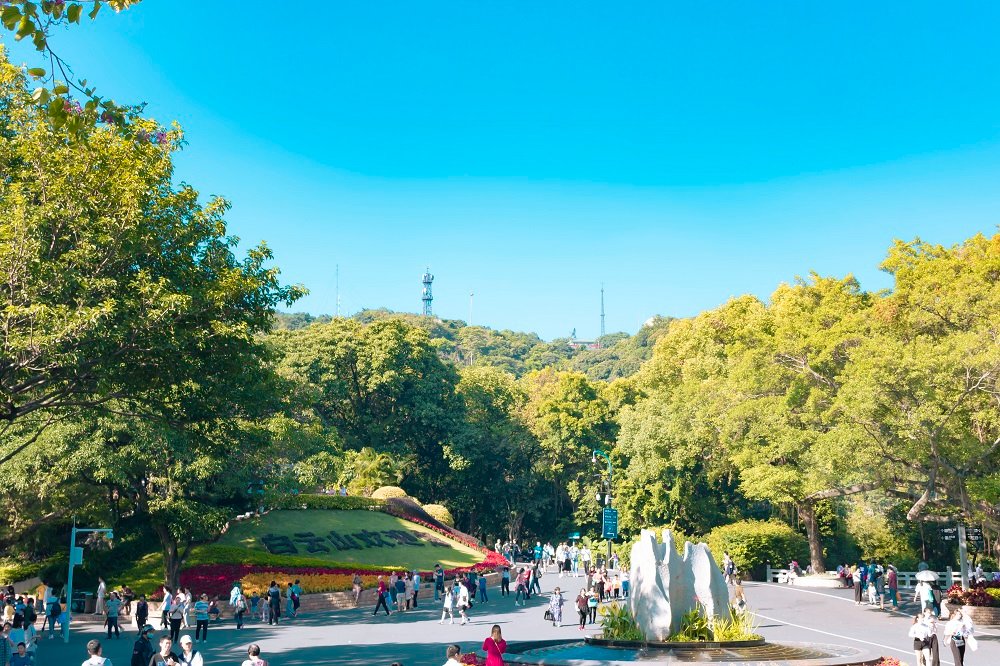
Baiyun Mountain in Guangzhou is a renowned tourist destination that offers a blend of natural beauty, cultural heritage, and recreational activities. If you’re planning a trip to Guangzhou, Baiyun Mountain is a must-visit attraction. Some of the highly recommended spots inside include:
- Mingchun Valley: Currently China’s largest natural aviary, covering an area of 56,000 square meters, it is a unique place to observe various bird species in a natural setting.
- Nengren Temple: Among the numerous ancient temples on Baiyun Mountain, Nengren Temple is the only one that has been exceptionally well-preserved.
- Moxing Ridge: This is the highest peak on Baiyun Mountain, standing at an elevation of 382 meters and ranking as the highest of over thirty peaks.
- Peach Blossom Ravine: Known for its peach blossom viewing, there is an additional fee of 5 yuan during the peak bloom season, while it’s free at other times.
- Plum Blossom Valley: The park boasts nearly a thousand plum trees of various types, including over 460 fruit plum trees, more than 120 beauty plum trees, 34 spring-blooming plum trees, over 30 apricot trees, and more than 150 cherry trees.
Baiyun Mountain has multiple entrances, with the South Gate (Main Gate) and West Gate being the most popular. These gates are open 24 hours a day and offer a richer array of scenic spots along the way.
Yuexiu Park (Free)
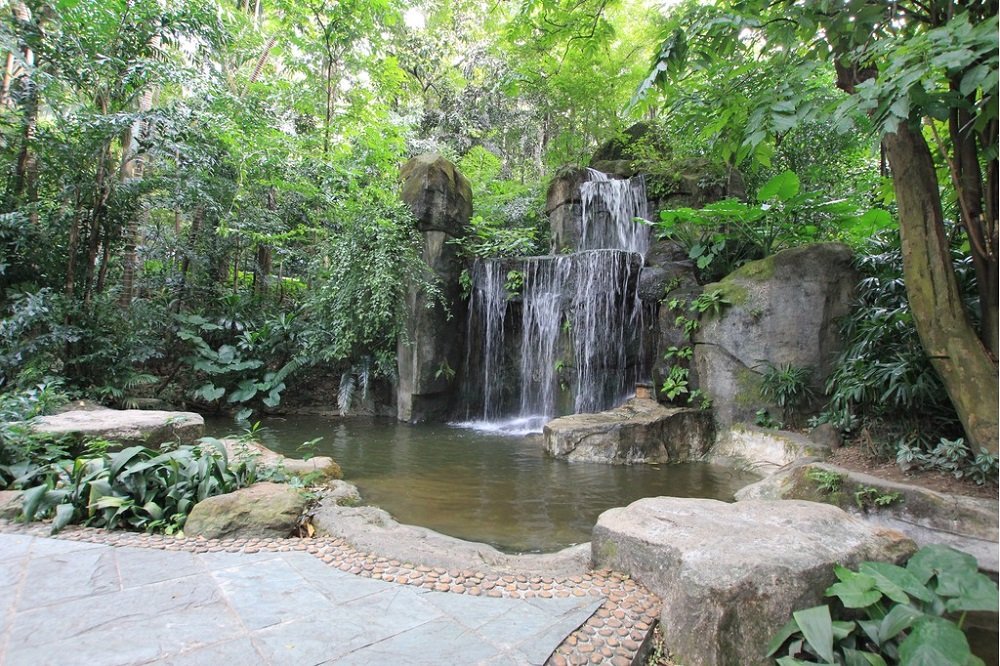
Yuexiu Park boasts a rich history and offers a harmonious blend of natural and cultural attractions, making it a beautifully landscaped municipal park. Comprising 7 hills and 3 artificial lakes, the park features lush greenery with a remarkable greening coverage of 83.48%.
The park not only preserves historical relics from various periods, such as Zhenhai Tower, the Ming Dynasty city wall, the Sifang Battery site, and the Sun Yat-sen Monument but also incorporates modern amenities like the Five Rams Courtyard, Bamboo Grove Leisure Area, and a swimming pool. Here, ancient relics harmonize with contemporary culture, and the natural world dances in tandem with human artistry, creating a captivating environment for all to enjoy.
Liwan Lake Park (Free Admission)

Liwan Lake Park, a district-level cultural and recreational park, spans 278,000 square meters, with a water area of 171,000 square meters and nearly 300 lychee trees scattered throughout.
While not particularly large, the park boasts a serene lake, picturesque pavilions, charming bridges, a central island, and an ancient-style corridor. During the summer, the air is filled with the sweet fragrance of lotus blossoms that grace the lake. The park is a favored gathering place for elderly locals, who can often be seen playing cards, chess, table tennis, dancing, or simply chatting under the shade of the trees.
Shangxiajiu Pedestrian Street (Free)

Shangxiajiu Pedestrian Street is a collective term for Shangjiu Road, Xiajiu Road, and Dishifu Road, making it one of the liveliest areas in the old city of Guangzhou. Stretching over 800 meters, this bustling street is lined with Lingnan-style arcade buildings. Comparable to Shanghai’s Nanjing Road, it’s a popular destination for dining, shopping, and experiencing the vibrant atmosphere of Guangdong’s old streets.
Yongqing Fang (Free)
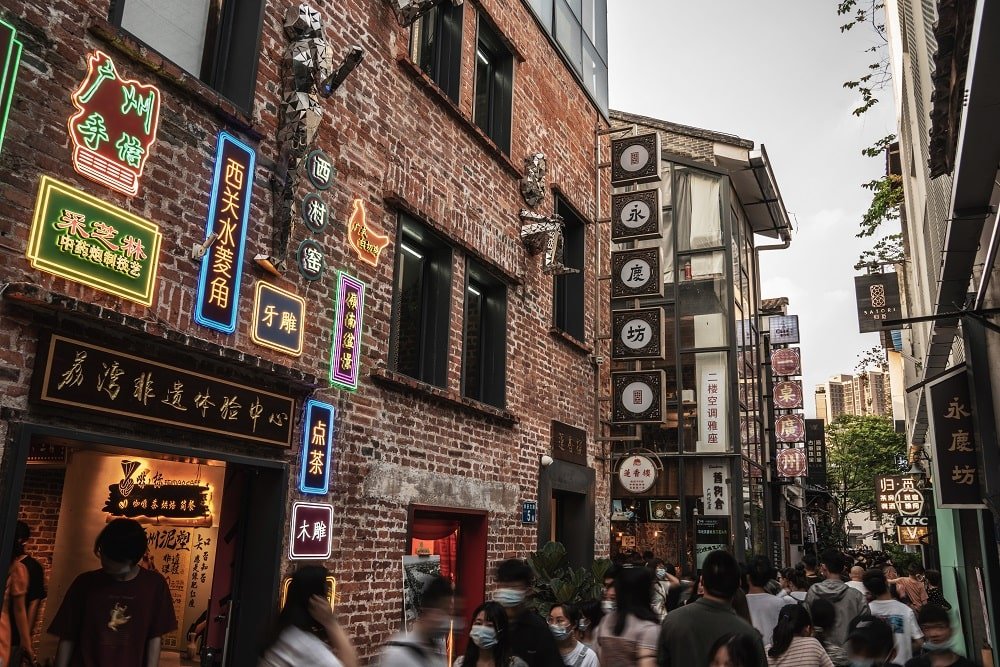
Yongqing Fang is a remarkable cultural district situated in the historic Xiguan area of Guangzhou. It stands as the city’s first intangible cultural heritage block, rich in urban heritage and cultural significance. Located on Enning Road, which is famed for its historical and cultural importance, this area is adorned with Guangzhou’s time-honored brands and historic buildings, carrying the cultural memory of the millennium-old commercial capital.
Preserving its historical and cultural legacy, Yongqing Fang has transformed into a destination where visitors can shop, learn, and explore, offering a taste of Guangzhou’s century-old street culture and the enchanting charm of Lingnan culture and art. You can explore Yongqing Fang in about 30 minutes on foot, and it’s filled with cafes, boutique hotels, and nostalgic shops, making it a perfect spot for artistic young travelers to explore and capture memories.
Guangdong Provincial Museum (Free)

Covering a vast area of 67,000 square meters, the Guangdong Provincial Museum stands as the comprehensive provincial museum of Guangdong Province. The museum comprises four main sections: the Historical Gallery, Natural Gallery, Art Gallery, and Temporary Exhibition Gallery.
For a recommended visit, start from the top and work your way down. Begin with the fourth floor, then proceed to the mezzanine on the third floor, followed by the third floor itself. The first and second floors, as well as the mezzanine on the second floor, primarily house cultural and creative areas, dining facilities, and offices.
The fourth floor features exhibits on natural resources and historical culture. The Natural Resources Gallery showcases original minerals and prehistoric biological fossils, making it an educational experience, particularly for children. In comparison to some renowned museums, the Guangdong Provincial Museum has fewer historical cultural relics. If you have a deep interest in historical artifacts, you may want to consider visiting the Western Han-Nanyue King’s Museum.
On the mezzanine of the third floor, there is a permanent exhibition of ceramics. If you’re intrigued by Chinese porcelain, you won’t want to miss the charming and unique ancient porcelain pieces on display. Before you explore, take a look at the large screen in the lobby where volunteers offer free explanations. Listening to these explanations can provide a different perspective and enhance your museum visit.
Western Han-Nanyue King's Museum (¥10)
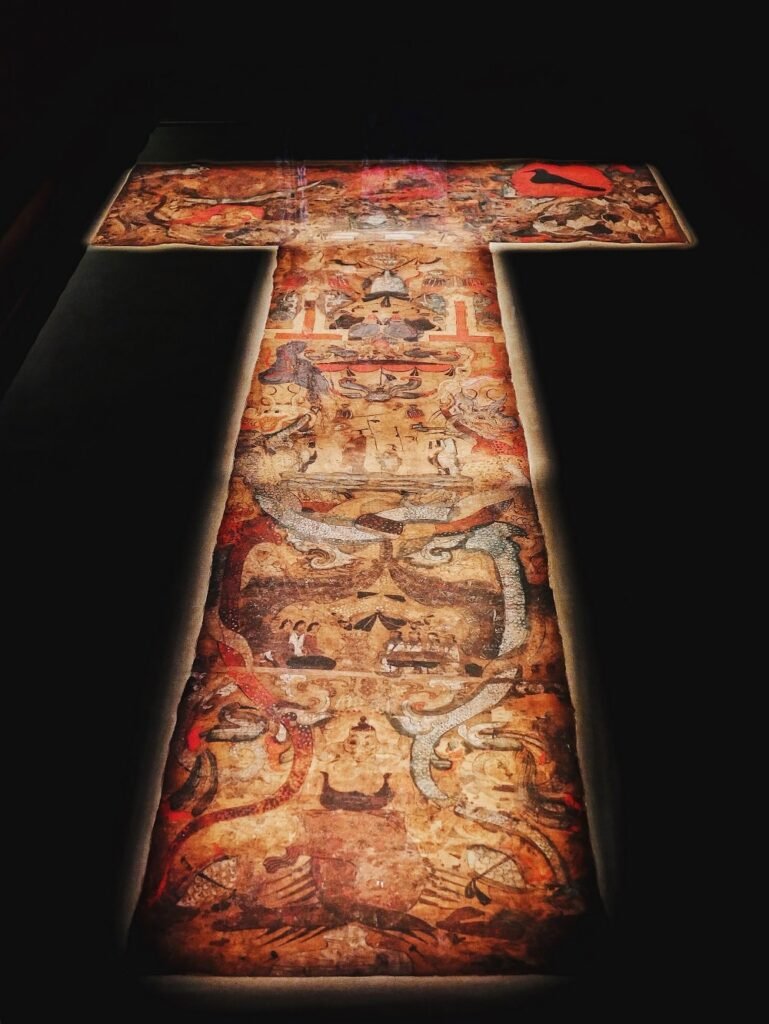
In June 1983, the tomb of the Nanyue King was excavated, and the Western Han-Nanyue King’s Museum was constructed on the original site of the tomb. This tomb is remarkably well-preserved and represents the largest known Han Dynasty painted stone chamber tomb in the Lingnan region. With over ten thousand excavated artifacts, it provides a comprehensive view of Lingnan’s political, economic, and cultural aspects from two thousand years ago.
The Western Han-Nanyue King’s Museum boasts an impressive architectural area of over 17,400 square meters and primarily showcases the original tomb site and its excavated artifacts. The museum comprises a protected ancient tomb area and a comprehensive exhibition building, featuring ten exhibition halls. Permanent exhibitions include displays of historical artifacts and porcelain pillows, with other rotating exhibitions held periodically. The artifact exhibition is the museum’s centerpiece, showcasing over ten thousand items excavated from the tomb of Nanyue King Zhao Mo. The exhibition covers various themes, such as Emperor Wen’s gold seal and treasures from the main chamber.
Chen Clan Academy (¥10)

Built in 1888 during the Qing Dynasty’s Guangxu period, the Chen Clan Academy stands as one of the best-preserved and most representative examples of late Qing Dynasty civilian architecture in Guangdong. It’s renowned for its distinctive and intricate sculptures. Besides its architectural beauty, the Chen Clan Academy also hosts art exhibitions and displays of historical photographs, providing a unique artistic experience within the old building.
Originally, the Chen Clan Academy served as lodgings for scholars from various regions who came to Guangzhou to participate in China’s imperial examinations. The Chen Clan Academy showcases ancient architectural styles, brimming with the charm of Guangzhou and the Lingnan region. The Chen Clan Academy has been meticulously preserved, making it a must-visit for travelers interested in historical architecture and heritage. Even if you’re not particularly interested in these aspects, you can still explore the serene old building and appreciate the beauty of traditional Chinese architecture.
Yuyin Shanfang (¥18)
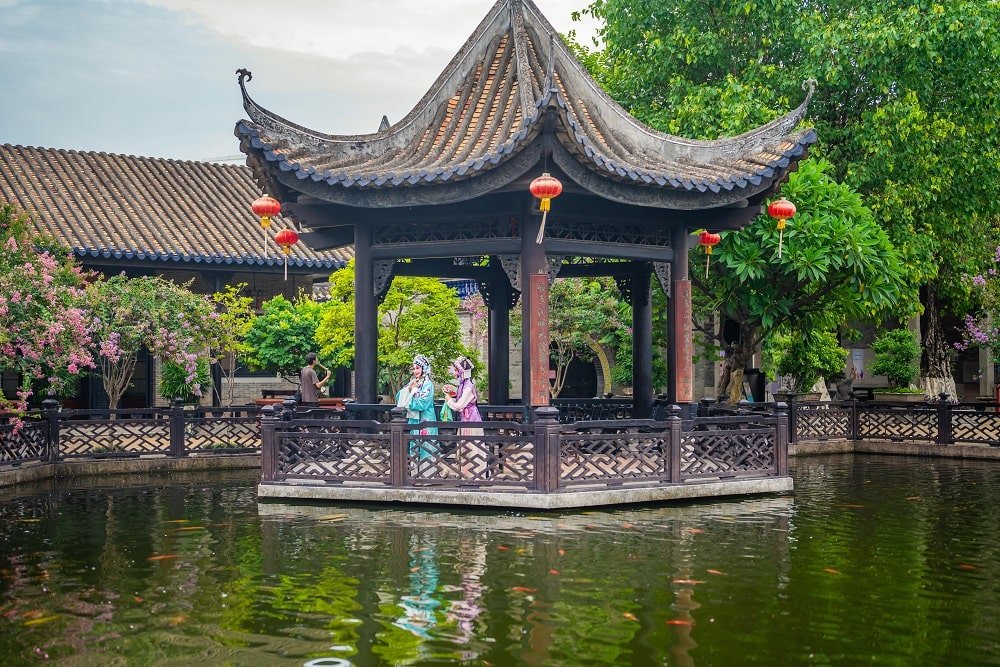
Yuyin Shanfang, a private garden of the Qing Dynasty scholar Wu Bin, boasts a history of more than 130 years. It is one of the four exquisite classical gardens in the Lingnan region and ranks among the four famous gardens in Guangdong. The garden’s small, delicate, and ancient layout is rich in artistic features, with every brick, tile, plant, and tree reflecting the architectural talents of Wu Bin.
The layout of Yuyin Shanfang is a visual feast, showcasing numerous elements of classical Chinese gardens. Within its small confines, you’ll find pavilions, towers, halls, bridges, corridors, embankments, hills, waters, and greenery, all intricately arranged within a radius of about 300 steps. The garden features a wide array of artworks, including brick carvings, wood carvings, plaster carvings, and stone carvings, adding vibrant colors to the overall landscape.
Guangzhou Zoo (¥20)

Established in 1958, Guangzhou Zoo is one of China’s three major urban zoos, alongside the Beijing Zoo and the Shanghai Zoo. This zoo is a fantastic destination for family outings, providing an opportunity to educate children about various animals and explore attractions like the Ocean Park and an amusement park.
Guangzhou Zoo houses and showcases over 400 species, totaling more than 5,000 wild animals. Among them are over 40 species of first-level national protected animals, including giant pandas and golden monkeys, as well as more than 60 species of second-level national protected animals like red pandas and white-naped cranes. Additionally, the zoo serves as a botanical garden with over 200 species and 10,000 plants, offering pleasant greenery year-round.
Chimelong Safari Park (¥300)

Chimelong Safari Park is hailed as “China’s top-tier international standard wildlife park.” It is known for its foundation in animal conservation and breeding, with a distinctive feature of showcasing large populations of rare animals from around the world. The park is home to more than 500 species and over 20,000 rare animals.
Notable residents include the “world’s only surviving giant panda triplets: Meng Meng, Shuai Shuai, and Ku Ku,” as well as the largest population of koalas outside of Australia, spanning up to the seventh generation. Chimelong Safari Park has been recognized as a “China Wildlife Conservation and Science Education Base.” If you’re traveling with the family and have children in tow, visiting the zoo is highly recommended as it offers a great opportunity for kids to learn about different animals.
Chimelong Paradise (¥250)

Chimelong Paradise in Guangzhou is one of the city’s most popular theme parks, offering an exciting and fun-filled experience for visitors of all ages. Whether you’re a child or an adult, this park promises unforgettable moments and cherished memories. To help you make the most of your visit to Chimelong Paradise, here’s a travel guide:
- Whirlwind Island: This section features a variety of thrilling and entertaining attractions, including the U-shaped skateboard ride, which combines elements of bungee jumping and roller coasters.
- Scream Zone: Known for its exhilarating and heart-pounding rides, it boasts the 10-loop roller coaster, with more inversions than any other coaster in Asia.
- Happy Baby Kingdom: Designed especially for children, this area offers numerous fun rides and attractions, allowing kids to enjoy the thrill of amusements and entertainment.
- Rainbow Bay: A themed park with a wide range of attractions, including vertical roller coasters, giant swinging pendulums, and family-friendly flying horse rides.
- Joyful Water World: A water park filled with various aquatic entertainment options, where visitors can cool off and have a splashing good time.
- Phantom Land: Featuring a 4D cinema for an extraordinary movie experience and the 360° panoramic Star Wars Adventure.
Chimelong Paradise is the place to be for an action-packed and enjoyable day out in Guangzhou.
Chimelong Water Park (¥280)
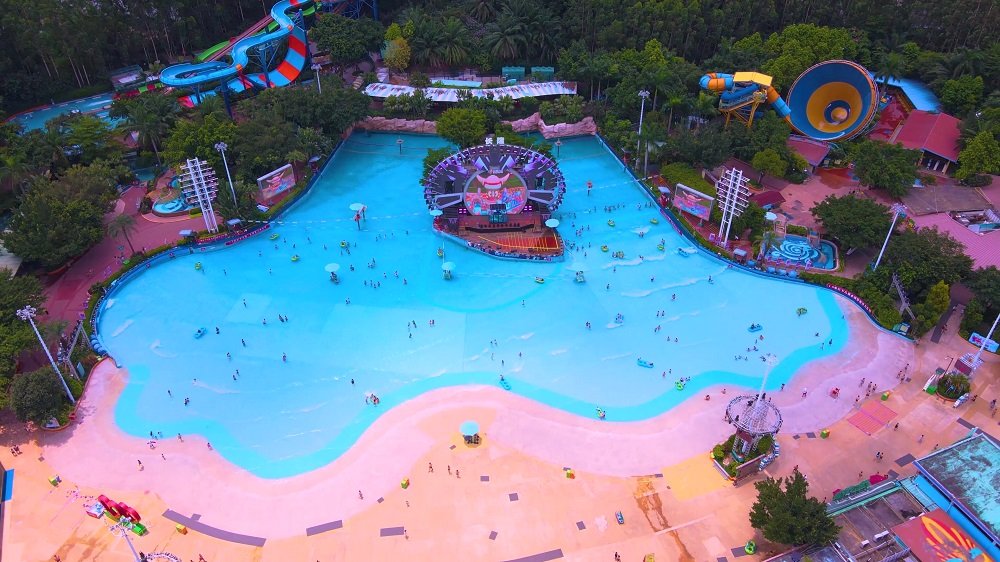
Chimelong Water Park is one of Asia’s largest water-themed amusement parks. This water park offers a wide range of exhilarating water activities and diverse amusement facilities. Whether you’re a fan of thrilling water sports or simply want to cool off in the water, you’ll find plenty of fun here. Here are some recommended attractions:
- Giant Skateboard Slide: This is the largest skateboard slide in Asia. Slide down from a great height and experience the thrill of speed and excitement.
- Lazy River: The lazy river winds its way around the entire park. You can relax in an inflatable raft and drift leisurely while enjoying the scenic surroundings.
- Super Bowl: One of the world’s largest funnel-shaped slides. Slide down from a height into a giant funnel-shaped tube and experience the exhilarating spin.
- Vertical Slide: One of the world’s longest vertical slides, reaching nearly ten stories high. Slide down from a great height and experience the ultimate sensation of weightlessness.
- Water Roller Coaster: Similar to a traditional roller coaster, but it operates entirely on water. You’ll experience the thrill of waves and water currents, adding a unique level of excitement.
Chimelong Water Park is the perfect destination for those seeking aquatic adventure and fun in Guangzhou.
Chimelong International Circus (From ¥350)

The Chimelong International Circus in Guangzhou is renowned for its spectacular performances. The grand theater features a world-famous forest-themed stage with actual scenic elements, including forests, hills, streams, and even small boats. Over 400 highly trained animals perform alongside the artists, creating a mesmerizing and unique experience.
The show includes animal performances, a floral parade, and acrobatics, all seamlessly woven together in a single performance. The performers are highly skilled, the costumes are dazzling, and when combined with the adorable and intelligent animals, fantastic lighting, and stage design, it truly immerses you in a captivating world of wonder.
Lingnan Impression Park (¥60)
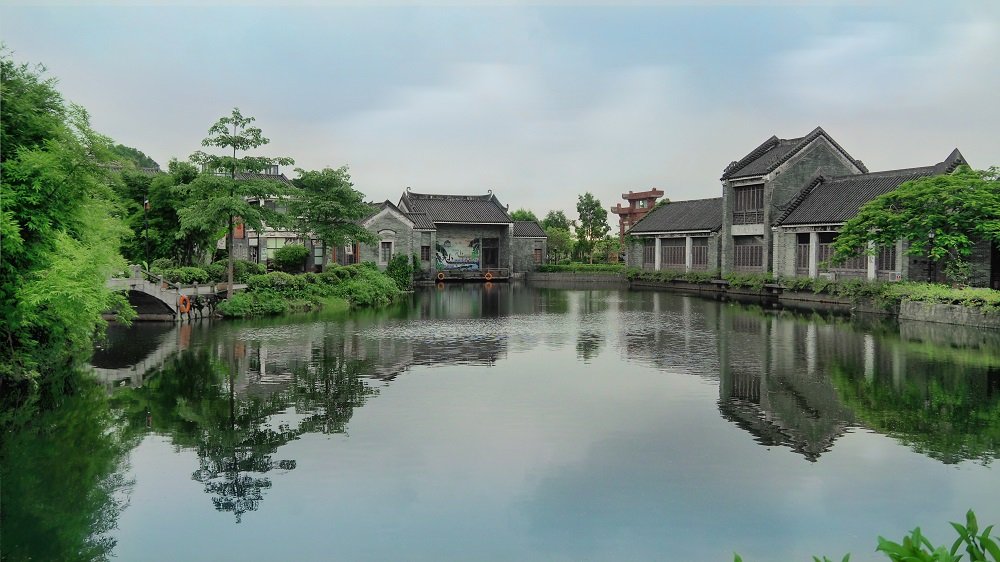
Lingnan Impression Park is surrounded by water on all sides, making the most of its natural geographical advantages and the rich Lingnan folk culture of the original Lianxi Village. It has become a large-scale leisure and cultural tourist destination that combines cultural sightseeing, fun rides, unique dining, leisure shopping, and spectacular performances.
In Lingnan Impression Park, you can experience a picturesque village with meandering streams, a tranquil Qingyun Lane, traditional ancestral halls and courtyards, as well as classic nostalgic shops and eateries. Every brick, every tile, every blade of grass and tree exudes the rich essence of Lingnan culture. Stepping into this park feels like discovering a treasure trove of Lingnan heritage and culture.
Guangzhou Opera House (¥30)
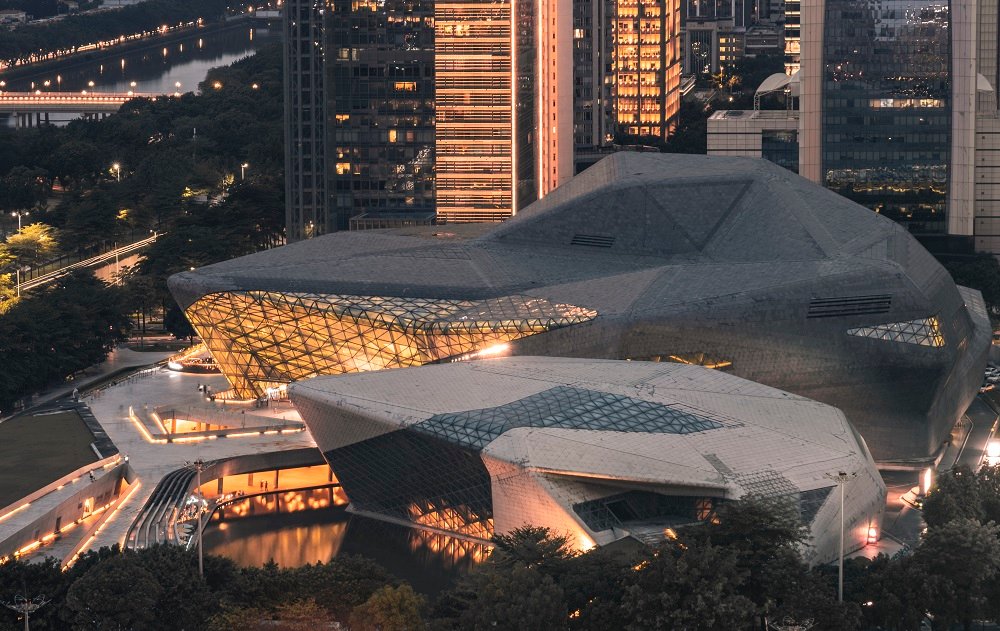
The Guangzhou Opera House is situated at the heart of Guangzhou’s CBD (Central Business District). Designed by the first woman to receive the Pritzker Architecture Prize, British-Iraqi architect Zaha Hadid, it resembles two smooth pebbles washed by the Pearl River, showcasing a unique and imaginative architectural style.
The theater boasts near-perfect acoustics crafted by renowned sound engineer Sir Harold Marshall. This attention to acoustics has earned the Guangzhou Opera House high acclaim from the global architectural and performing arts communities, leading to its recognition as one of the “Top Ten Opera Houses in the World” and one of the “Most Spectacular Theaters in the World” by international critics and experts.
South China Botanical Garden (¥50)
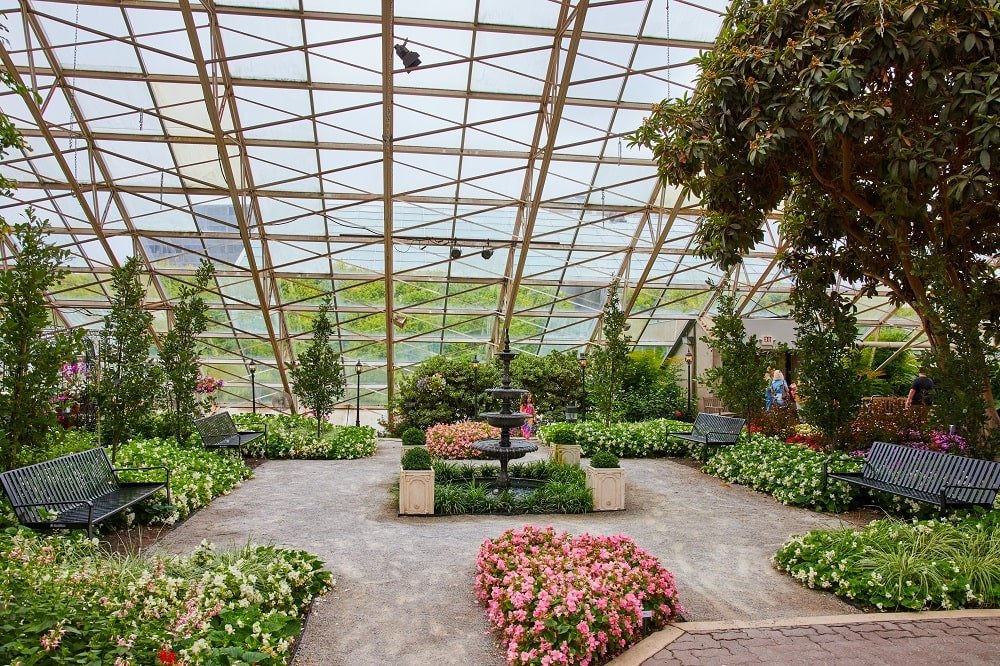
Covering an expansive area of 4,237 acres, the South China Botanical Garden in Guangzhou serves various functions including scientific research, species conservation, public education, and leisure tourism. It is a delightful destination for learning about botany, environmental science, and ecological tourism.
The garden encompasses several key areas including an exhibition greenhouse complex, the Longdong Qilin Scenic Area, and a center for the conservation of rare plants. It also features 38 specialized gardens like the Magnolia Garden, Palm Garden, and Ginger Garden, offering diverse botanical experiences. It’s recognized as one of the “Top Ten Tourist Attractions in Guangzhou,” and you can explore these vast grounds by taking a sightseeing tram, as the different plant collections are spread throughout various themed gardens.
Baishuizhai Scenic Area (¥60)
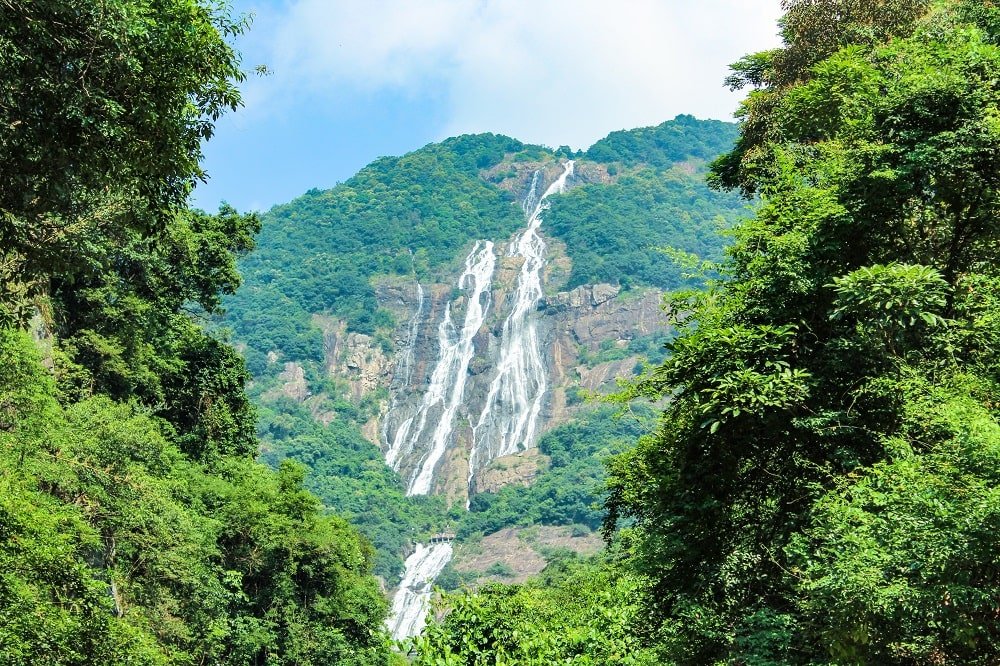
The Baishuizhai Scenic Area boasts rare natural ecological resources in Guangdong, including pristine forests, shallow wetlands, and a canyon’s heavenly pool. One of its most remarkable features is the Baishuixian Waterfall, with an astounding drop of 428.5 meters, making it the tallest waterfall within China’s borders.
Due to its location in the southern region, Baishuizhai experiences distinct seasons. It’s advisable for travelers to visit during the spring or autumn months, avoiding the hot weather and peak tourist season. In spring, the temperature is pleasant, and you can witness the rejuvenation of nature with beautiful landscapes and blooming flowers. Autumn offers cool weather, clear skies, and a comfortable atmosphere for your journey.
Guangzhou Great Buddha Temple (Free)
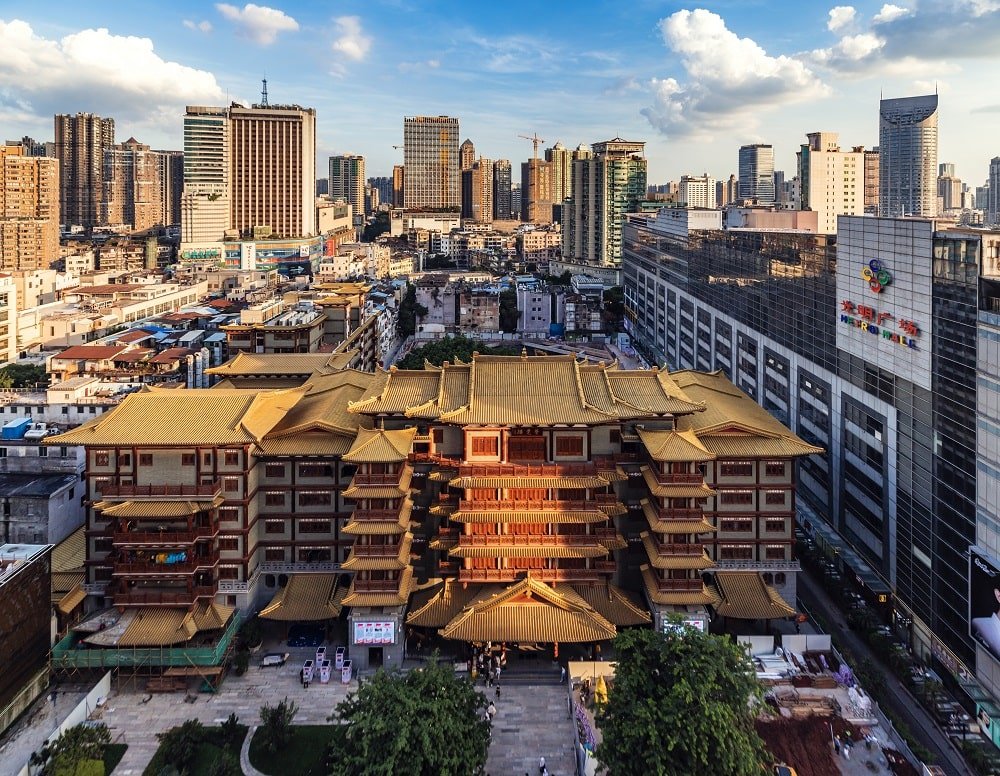
The Great Buddha Temple was initially constructed during the Southern Han Dynasty (917-971 AD). In the second year of the Kangxi reign (1663 AD), it was rebuilt by Wang Shangkexi, the Prince of Pingnan, using his royal stipend. The temple is renowned for housing three massive brass statues of Buddha in the main hall, each standing at 6 meters tall and weighing 10 tons. This is how the temple earned its name.
Inside the temple, the enormous nanmu wood pillars used in the main hall were donated by the king of Annam (modern-day Vietnam). These pillars have remained intact and undamaged for over 350 years. The architectural style of the temple combines elements of both the imperial temples of Beijing and the local Lingnan style, making it artistically valuable and well-regarded both nationally and internationally. Additionally, the Grand Buddha Temple features a large Buddhist library open to the public and believers, housing 220,000 volumes and 19,000 titles of Buddhist literature.
Conclusion
Guangzhou, with its blend of tradition and innovation, is a city that never ceases to amaze. Whether you’re wandering through centuries-old temples or enjoying the thrills of a modern theme park, you’ll discover a city that embraces its rich heritage while eagerly embracing the future. So, pack your bags and get ready to explore the diverse landscapes, cultural gems, and thrilling adventures that Guangzhou has to offer. Your journey through this enchanting city promises unforgettable memories and a deeper appreciation for the wonders of China.



